When it comes to combining luxury and practicality, two strong contenders in the automotive world are the BMW 3er Touring and the Volvo V60. Both of these wagons offer a perfect blend of style, technology, and performance. In this detailed comparison, we delve into their technical aspects, innovations, and overall driving experience to help you decide which one might suit your needs better.
BMW 3 Series Touring vs Volvo V60 – Performance, range & efficiency compared
Both models have their strengths – but which one suits you more?
Compare performance, efficiency, price and space directly: BMW 3 Series Touring or Volvo V60?
Design and Aesthetics
The BMW 3er Touring boasts a classic yet modern design that reflects the brand's sporty heritage. With sharp lines and an aggressive stance, it perfectly embodies the BMW DNA. On the other hand, the Volvo V60 represents Scandinavian minimalism with its clean lines and elegant curves. Both vehicles are 5-door configurations, providing ample access for passengers and cargo alike, but their design philosophies differ significantly.
Engine Options and Performance
The BMW 3er Touring offers an extensive array of engine options, including Diesel MHEV, Petrol, Petrol MHEV, and Plugin Hybrid variants, with power outputs ranging from 150 to a staggering 530 HP. Its acceleration from 0 to 100 km/h spans from a smooth 4.6 seconds in the performance models to a more moderate 8.8 seconds in the base models. The V60 offers fewer choices, but with options like the powerful 398 HP engine, it still competes aggressively.
In terms of torque, the BMW offers between 250 and 700 Nm, while the V60 peaks at an impressive 659 Nm from its hybrid powertrain. Both vehicles feature automatic transmissions, but the BMW’s transmission is a more traditional automatic gearbox, whereas the V60 utilizes a dual-clutch system for a sportier driving experience.
Fuel Efficiency and Emissions
Fuel consumption is another vital aspect to consider. The BMW 3er Touring exhibits a broad spectrum of consumption rates, with figures ranging from a low of 5.1 L/100km to higher values in the performance models. The V60 shows a slightly lesser efficiency, with consumption figures between 6.2 and 7.4 L/100km, although its plugin hybrid offers a consumption rate of just 0.7 L/100km.
CO2 emissions are crucial for eco-conscious buyers, and here both cars show efficiency, but BMW's models emit from 134 to 182 g/km, while the V60's range is from 140 to 168 g/km. The V60 also leads with a smaller battery capacity at 14.7 kWh compared to the 3er Touring's 19.5 kWh, giving it a decent electric range of about 92 km.
Interior Experience and Technology
Inside the BMW 3er Touring, you’ll find a driver-focused cockpit filled with high-quality materials and cutting-edge technology. The infotainment system includes a large display with seamless connectivity options and integration of driving assistance features. Comfort is paramount, with spacious seating for up to five passengers and a substantial trunk capacity of up to 500 liters.
Conversely, the Volvo V60 focuses heavily on safety and comfort, showcasing a minimalist design that emphasizes functionality. With its impressive trunk capacity of 519 liters, it offers ample space for luggage. The V60’s infotainment system is equally sophisticated, with intuitive controls, ensuring a user-friendly experience for passengers. Volvo is well-known for its safety ratings, and the V60 continues this tradition with numerous integrated safety features.
Driving Experience
Driving dynamics set these two apart, with the BMW 3er Touring extensively embraced for its sporty handling and rear-wheel drive options for enthusiasts. Alternatively, the V60 offers a more comfort-oriented ride, while still providing decent sportiness in its all-wheel-drive configuration. Both vehicles deliver a solid driving experience, but the choice largely depends on individual driving preferences.
Conclusion
In summary, the BMW 3er Touring and Volvo V60 are formidable competitors in the premium wagon segment. If you value sporty performance with a diverse range of engines and a dynamic driving experience, the BMW 3er Touring may be your best bet. However, if safety, comfort, and minimalistic elegance are higher on your list of priorities, the Volvo V60 will cater to your sensibilities. Ultimately, choosing between these two will come down to personal preference and specific needs.
Here’s where it gets real: The technical differences in detail
Costs and Efficiency:
Price and efficiency are often the first things buyers look at. Here it becomes clear which model has the long-term edge – whether at the pump, the plug, or in purchase price.
BMW 3 Series Touring has a slight advantage in terms of price – it starts at 41100 £, while the Volvo V60 costs 41600 £. That’s a price difference of around 591 £.
Fuel consumption also shows a difference: BMW 3 Series Touring manages with 0.90 L and is therefore convincingly more efficient than the Volvo V60 with 2.40 L. The difference is about 1.50 L per 100 km.
As for range, the BMW 3 Series Touring performs barely noticeable better – achieving up to 97 km, about 5 km more than the Volvo V60.
Engine and Performance:
Power, torque and acceleration are the classic benchmarks for car enthusiasts – and here, some clear differences start to show.
When it comes to engine power, the BMW 3 Series Touring has a slightly edge – offering 550 HP compared to 455 HP. That’s roughly 95 HP more horsepower.
In acceleration from 0 to 100 km/h, the BMW 3 Series Touring is distinct quicker – completing the sprint in 3.50 s, while the Volvo V60 takes 4.60 s. That’s about 1.10 s faster.
In terms of top speed, the BMW 3 Series Touring performs noticeable better – reaching 300 km/h, while the Volvo V60 tops out at 180 km/h. The difference is around 120 km/h.
There’s also a difference in torque: Volvo V60 pulls barely noticeable stronger with 709 Nm compared to 700 Nm. That’s about 9 Nm difference.
Space and Everyday Use:
Whether family car or daily driver – which one offers more room, flexibility and comfort?
Both vehicles offer seating for 5 people.
In curb weight, BMW 3 Series Touring is hardly perceptible lighter – 1650 kg compared to 1734 kg. The difference is around 84 kg.
In terms of boot space, the Volvo V60 offers barely noticeable more room – 519 L compared to 500 L. That’s a difference of about 19 L.
In maximum load capacity, the BMW 3 Series Touring performs barely noticeable better – up to 1510 L, which is about 79 L more than the Volvo V60.
When it comes to payload, BMW 3 Series Touring minimal takes the win – 520 kg compared to 506 kg. That’s a difference of about 14 kg.
Who wins the race?
The BMW 3 Series Touring proves to be leaves the rival little chance and therefore becomes our DriveDuel Champion!
BMW 3 Series Touring is the better all-rounder in this comparison.
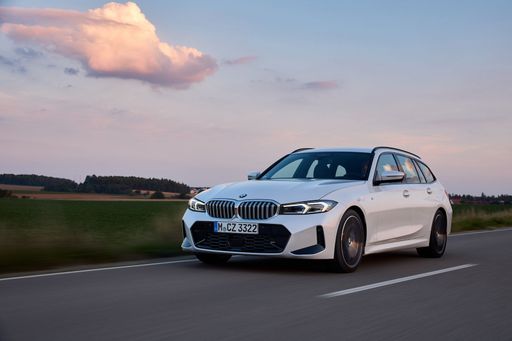 @ BMW Group Press
@ BMW Group Press
BMW 3 Series Touring
BMW 3 Series Touring
The BMW 3 Series Touring combines dynamic performance with practical versatility, making it an ideal choice for both spirited drives and everyday use. Its elegant design is complemented by a spacious interior, offering ample room for passengers and luggage alike. Cutting-edge technology enhances the driving experience, ensuring comfort and convenience on every journey.
details @ BMW Group Press
@ BMW Group Press
 @ BMW Group Press
@ BMW Group Press
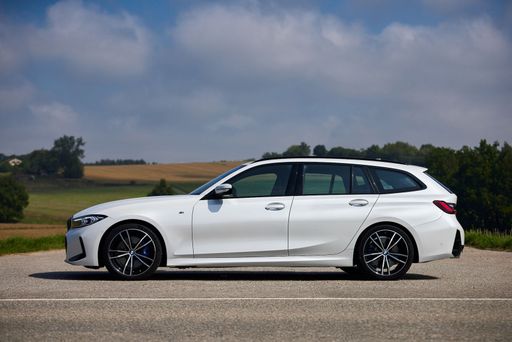 @ BMW Group Press
@ BMW Group Press
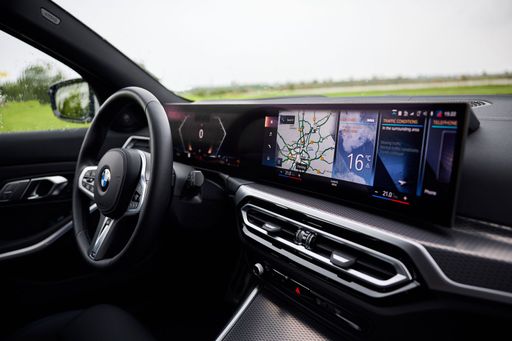 @ BMW Group Press
@ BMW Group Press
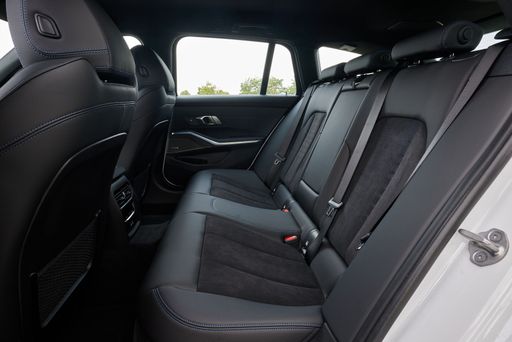 @ BMW Group Press
@ BMW Group Press
Volvo V60
The Volvo V60 exudes a sense of refined elegance with its sleek design and smooth contours, making it a standout in the estate car category. Inside, it offers a harmonious blend of luxury and functionality with premium materials and state-of-the-art technology, ensuring a comfortable driving experience. Its performance on the road is impressive, combining efficient handling with a powerful yet quiet ride, making it a favourite for those who appreciate both style and substance.
details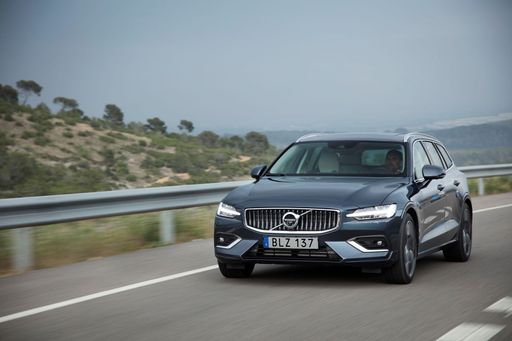 @ Volvo Cars
@ Volvo Cars
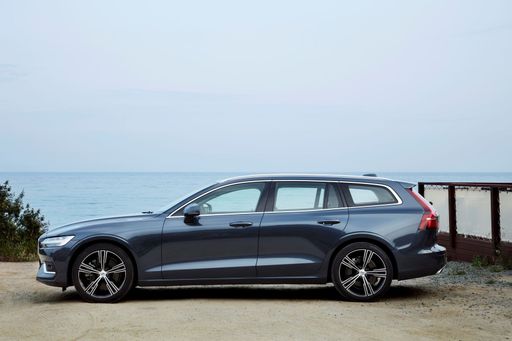 @ Volvo Cars
@ Volvo Cars
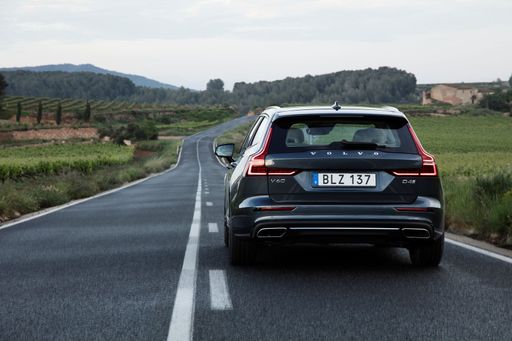 @ Volvo Cars
@ Volvo Cars
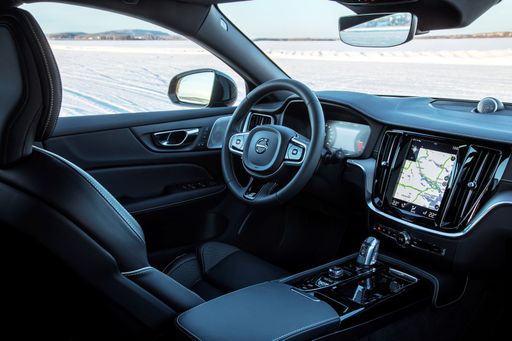 @ Volvo Cars
@ Volvo Cars
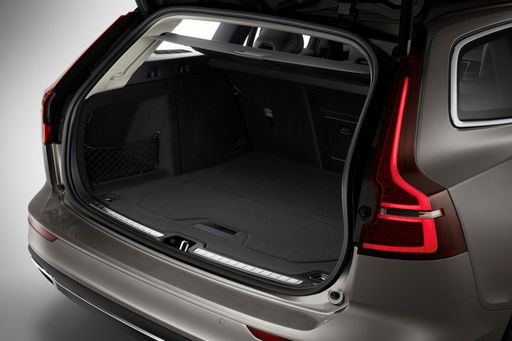 @ Volvo Cars
@ Volvo Cars
 @ BMW Group Press
@ BMW Group Press
|
 @ Volvo Cars
@ Volvo Cars
|
|
|
|
Costs and Consumption |
|
|---|---|
|
Price
41100 - 131100 £
|
Price
41600 - 64200 £
|
|
Consumption L/100km
0.9 - 10.5 L
|
Consumption L/100km
2.4 - 6.2 L
|
|
Consumption kWh/100km
-
|
Consumption kWh/100km
-
|
|
Electric Range
91 - 97 km
|
Electric Range
92 km
|
|
Battery Capacity
19.50 kWh
|
Battery Capacity
14.70 kWh
|
|
co2
20 - 238 g/km
|
co2
54 - 140 g/km
|
|
Fuel tank capacity
40 - 59 L
|
Fuel tank capacity
60 L
|
Dimensions and Body |
|
|---|---|
|
Body Type
Estate
|
Body Type
Estate
|
|
Seats
5
|
Seats
5
|
|
Doors
5
|
Doors
5
|
|
Curb weight
1650 - 2025 kg
|
Curb weight
1734 - 2064 kg
|
|
Trunk capacity
410 - 500 L
|
Trunk capacity
519 L
|
|
Length
4713 - 4801 mm
|
Length
4778 mm
|
|
Width
1827 - 1918 mm
|
Width
1850 mm
|
|
Height
1440 - 1448 mm
|
Height
1432 mm
|
|
Max trunk capacity
1420 - 1510 L
|
Max trunk capacity
1431 L
|
|
Payload
405 - 520 kg
|
Payload
466 - 506 kg
|
Engine and Performance |
|
|---|---|
|
Engine Type
Diesel MHEV, Plugin Hybrid, Petrol, Petrol MHEV
|
Engine Type
Petrol MHEV, Plugin Hybrid
|
|
Transmission
Automatic
|
Transmission
Automatic
|
|
Transmission Detail
Automatic Gearbox
|
Transmission Detail
Dual-Clutch Automatic, Automatic Gearbox
|
|
Drive Type
Rear-Wheel Drive, All-Wheel Drive
|
Drive Type
Front-Wheel Drive, All-Wheel Drive
|
|
Power HP
150 - 550 HP
|
Power HP
197 - 455 HP
|
|
Acceleration 0-100km/h
3.5 - 8.8 s
|
Acceleration 0-100km/h
4.6 - 7.6 s
|
|
Max Speed
213 - 300 km/h
|
Max Speed
180 km/h
|
|
Torque
250 - 700 Nm
|
Torque
300 - 709 Nm
|
|
Number of Cylinders
4 - 6
|
Number of Cylinders
4
|
|
Power kW
110 - 405 kW
|
Power kW
145 - 335 kW
|
|
Engine capacity
1995 - 2998 cm3
|
Engine capacity
1969 cm3
|
General |
|
|---|---|
|
Model Year
2024 - 2025
|
Model Year
2024 - 2025
|
|
CO2 Efficiency Class
D, E, F, B, G
|
CO2 Efficiency Class
E, B
|
|
Brand
BMW
|
Brand
Volvo
|
Is the BMW 3 Series Touring offered with different drivetrains?
The BMW 3 Series Touring is offered with Rear-Wheel Drive or All-Wheel Drive.
The prices and data displayed are estimates based on German list prices and may vary by country. This information is not legally binding.
